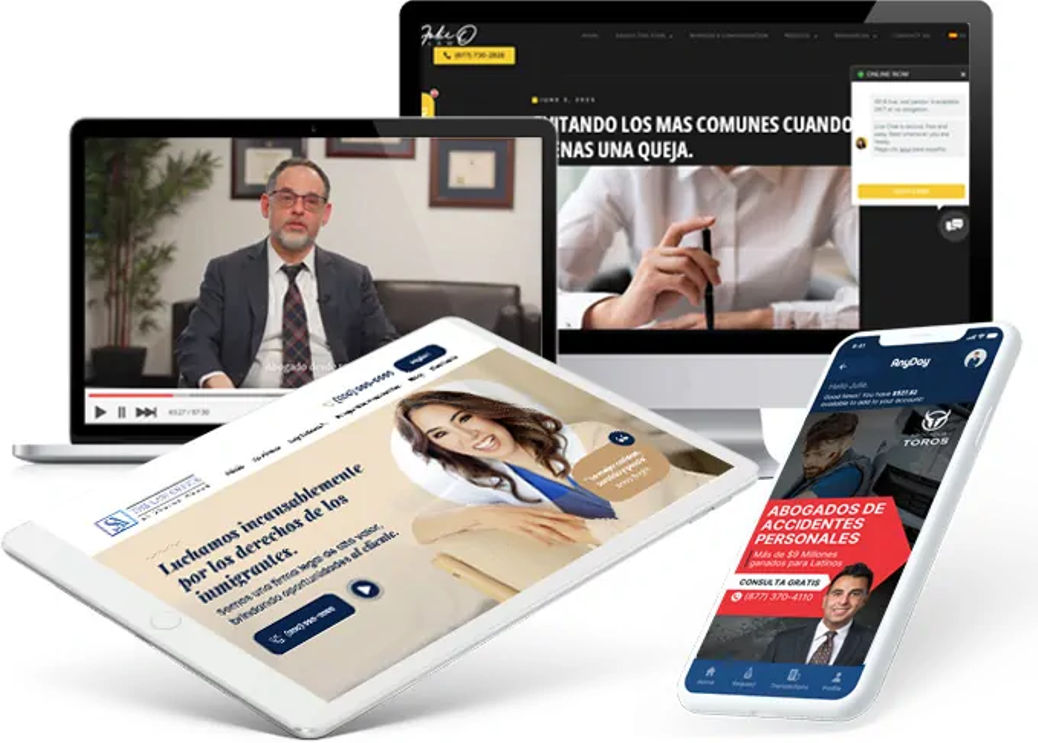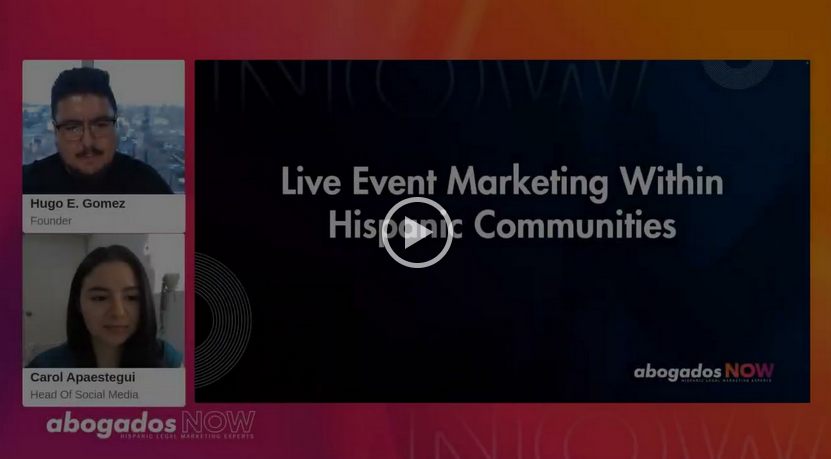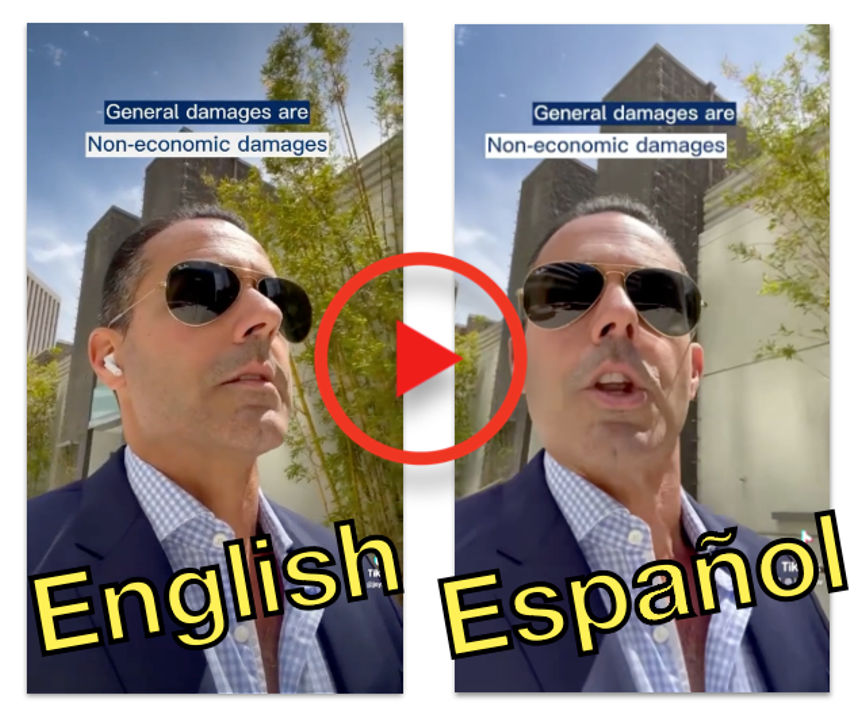1. Avoiding the Cardinal Sin of Spanish-Ready Websites
Do NOT use Google translate or other machine translators to turn your English website into a Spanish website. If there’s any piece of advice that you walk away with from this newsletter, it’s this one.
At its core, building a Spanish-ready website is NOT a translation exercise– it’s a cultural exercise. Hire a native Spanish-speaking copywriter to write the contents of your website from scratch. There are 12 primary Spanish dialects in Latin America alone, and the cultural differences from country to country are vastly different. I’ll be going more in-depth with how to select the write dialect and how to tailor your website to the right demographic later in this email.
As you develop your Spanish-ready website, absolutely DO NOT forget the mobile experience. According to Pew Research, 80% of Latino adults access the internet via mobile device. Ensuring that your website is mobile optimized means more leads for your office. Check out this link to get the full rundown on how attorneys can mobile optimize their websites.
2. Ask More Questions Online to Avoid Tire-Kickers on the Phone
How much time and manpower does it take to filter incoming clients?
A client comes to your website. They see a phone number. They call the number. An intake rep picks up and spends 15 minutes getting the general details. The rep tells the client they’ll forward the information to a partner and that they’ll get in touch. After a few days, the rep calls the client to tell them whether or not the case will get picked up.
If it gets picked up, great, you have a new case. If it doesn’t, you just burned anywhere between an hour to a few days worth of work.
You can save time and money by automating portions of the onboarding process with online appointment setter software and a digital questionnaire. Potential clients self-sort themselves according to your specifications on the digital questionnaire. This way, only purchase-ready clients land on your appointment setter, where they self-assign appointments.
This allows you to filter out clients that aren’t a good fit for your firm, freeing up much needed hands to take care of clerical tasks and administrative work.
As an added bonus, this would also store all of your client’s information and case data in a centralized, easy-to-access location.
Having all of these systems set up for Spanish-ready websites would not only encourage Spanish-speaking visitors to stay and do their business with you, it would also help you tailor a more personalized experience to them.
If you conduct some research on your local Hispanic community to find out what their pain points are, you can directly input those pain points onto the website and the questionnaire. This will help your Hispanic visitors feel heard and cared for, which ultimately increases the chances of them doing business with you.
3. Becoming a Welcome Guest to the Hispanic Community
Understanding your local Hispanic community is the key to creating effective content that attracts and retains clients on your website. As mentioned before, Latin America alone has 12 primary Spanish dialects. So which dialect do you write in?
It depends entirely on your local community. Some cities may have a very strong Mexican community, while others may have strong Colombian communities.
You can tailor your website to your local community’s demographic if you feel that would be most effective. But if your local Hispanic community is fairly diverse (in the United States, chances are that it IS very diverse), sticking to very neutral Spanish works as well. The fact is, there are many Spanish dialects in the United States and ignorant emphasis on one particular dialect may alienate speakers from different countries.
Hearkening back to the second point, the research you conduct on your local Hispanic community should also inform the legal services, pain points, and fears you address on your Spanish website. All of these things should be included in the FAQ and other customer-facing copy.
Speaking of copy…
4. Demystify and Simplify the “Lawyer Experience”
Many of your Hispanic clients may come from emotionally vulnerable circumstances. If they’re already intimidated by the prospect of going to a lawyer, then the language used for first-contact should be friendly, direct, and simple.
Toss the jargon out the window and clearly spell out any complex topics to minimize any confusion.
Additionally, showcase positive experiences you may have had with Hispanic clients by sharing photos and testimonials on your website. You may even use stock images featuring Hispanic actors as a gesture of goodwill. As powerful pieces of social proof on your Spanish-ready website, remember this: Show, don’t tell.
You may also express your willingness to help anyone regardless of immigration status, as this is a sensitive topic rife with uncertainty and fear. Using direct, clear language to get this across eliminates uncertainty and makes clear your allegiances to their cause. By offering tailored support in their language, you empower them to comprehend their rights and develop trust in your services.
5. The Lawyer’s Visual Guided-Tour Strategy
Visual assets are one of the easiest ways to:
- Disarm intimidating legal concepts, and
- Become a household name in the Hispanic community
Brochures, pamphlets, articles, guides, info sheets, fact sheets, and videos (all in Spanish, of course) are easy-to-access points of entry into your practice for Hispanic consumers.
Printable and downloadable resources can be easily recalled from the phone, explored through web browsers, and shared via messaging and social media apps.
You can create infographics for various legal processes in handling PI, immigration, or criminal cases. To the consumer, these processes are heavily obfuscated and intentionally complicated. A lack of transparency breeds distrust, confusion, and fear.
A simple visual disarms these negative emotions and allows you to build genuine trust with Hispanic clients.
Education helps Hispanic clients understand their situation, and this in turn ensures that they do not withhold information from you. Including a Q&A section as well as fact sheets help you address popular concerns and misinformation that so often accompanies complex legal circumstances. Our advice? Tailor these to the needs and concerns of your local community.
Altogether, these steps should help you and your team better understand the scope of an effective, Spanish-ready website.
How Can We Help?
A Spanish-ready website is vital if you want to build and grow client acquisition systems in the Hispanic community. As the cornerstone of your customer-facing assets across digital channels, not having a Spanish-ready website means attorneys miss out on the opportunity to get ahead of their competition.
Picking the right partner is key to ensuring your marketing investment yields the best results, with our partners seeing an average 7x return on investment.
AbogadosNOW understands what attorneys need from their websites and what Hispanic consumers want. Our team gives your firm more visibility by creating custom, conversion-focused designs in English and Spanish.
Reach out today to explore how we can elevate your practice in this transformative digital age!





